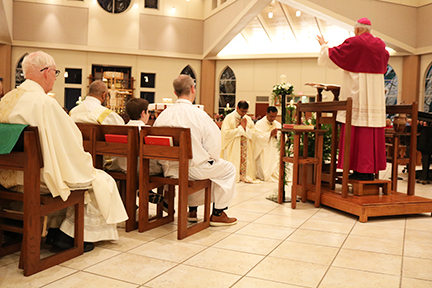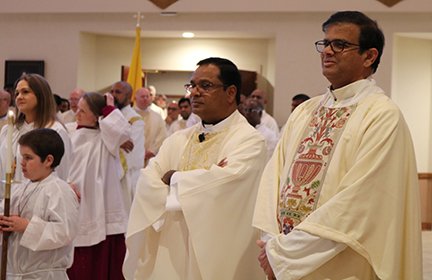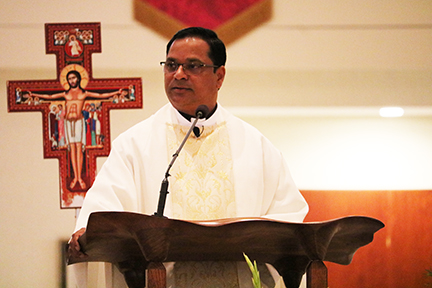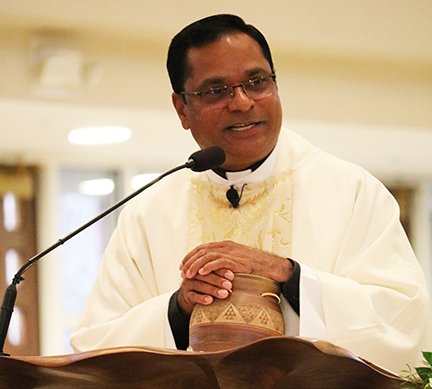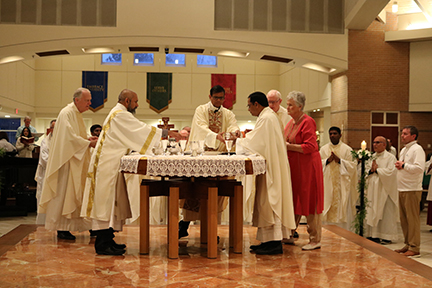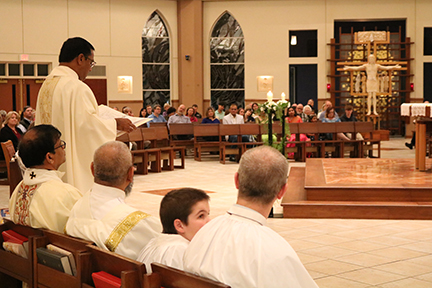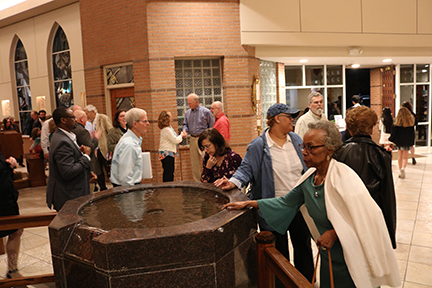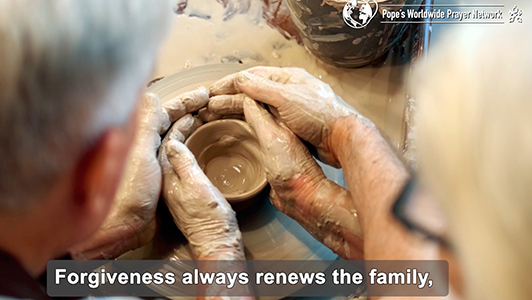By Cindy Wooden
VATICAN CITY (CNS) – On his 21st day in Rome’s Gemelli hospital, Pope Francis recorded a 27-second audio message thanking people for their prayers.
Played before the nightly recitation of the rosary in St. Peter’s Square March 6, the pope said, “I thank you from the bottom of my heart for your prayers for my health from the square; I accompany you from here. May God bless you and the Virgin protect you. Thank you.”
The message in Spanish was recorded in the hospital earlier in the day, the Vatican press office said, offering no other details.
The 88-year-old pope, who has been battling double pneumonia, had obvious difficulty speaking in the recording, but it was the first time the public had heard his voice since he was hospitalized Feb. 14 for bronchitis and difficulty breathing.
The rosary was led by Cardinal Ángel Fernández Artime, pro-prefect of the Dicastery for Institutes of Consecrated Life and Societies of Apostolic Life, who announced the recording as “good news, a beautiful gift.” The hundreds of people in the square applauded before and after listening to the pope.
Shortly before the audio was released, the pope’s doctors had said in their evening bulletin that Pope Francis’ condition remained stable, and he continued his respiratory and physical therapy “with benefit.”
He had no fever, no episodes of “respiratory insufficiency” and his blood tests and “hemodynamic parameters,” which measure heart health, “remained stable,” the doctors said in the bulletin released by the Vatican.

“In view of the stable clinical picture, the next medical bulletin will be issued Saturday,” March 8, the bulletin said. However, the doctors said they were maintaining their prognosis of the pope’s condition as “guarded.”
The was diagnosed with double pneumonia Feb. 18. He experienced breathing crises Feb. 22 and March 3, but the bulletins have described his condition as “stable” since then.
In addition to the medical information, the bulletin said the pope “devoted himself to some work activities during the morning and afternoon, alternating between rest and prayer. Before lunch he received the Eucharist.”
Pope Francis continues to receive high-flow oxygen through a nasal cannula during the day and to use “noninvasive mechanical ventilation” to help him breathe through the night, a Vatican source said.
Retired Polish Cardinal Stanislaw Dziwisz, who served as St. John Paul II’s personal secretary from 1966 until the pope’s death in 2005, told the Italian newspaper La Repubblica March 5 that he believed Pope Francis, like his Polish predecessor, continues to serve the church even from his hospital bed.
When St. John Paul II was bedridden, “voiceless, unable to speak, lacking strength,” the cardinal said, he was “serving the church with heart, soul and clear mind. And I am sure that Pope Francis, for whose healing the whole world is praying, will do the same: he will lead the church as long as God wills, firmly embracing the cross, without any step backward.”
And even though he is not speaking in public, Cardinal Dziwisz said, “his voice rises loud and clear over a world beset by clashes and conflicts,” praying for peace, encouraging negotiations and even calling the pastor of the only Catholic parish in Gaza.
“Francis is not only our father, he is the highest moral figure who cares about the fate of all of humanity,” the cardinal said. “The whole world needs him. Let us pray that God will grant him the gift of healing and preserve him for us for a long time.”
(For more recent news on Pope Francis, visit https://www.usccb.org/newsroom)

